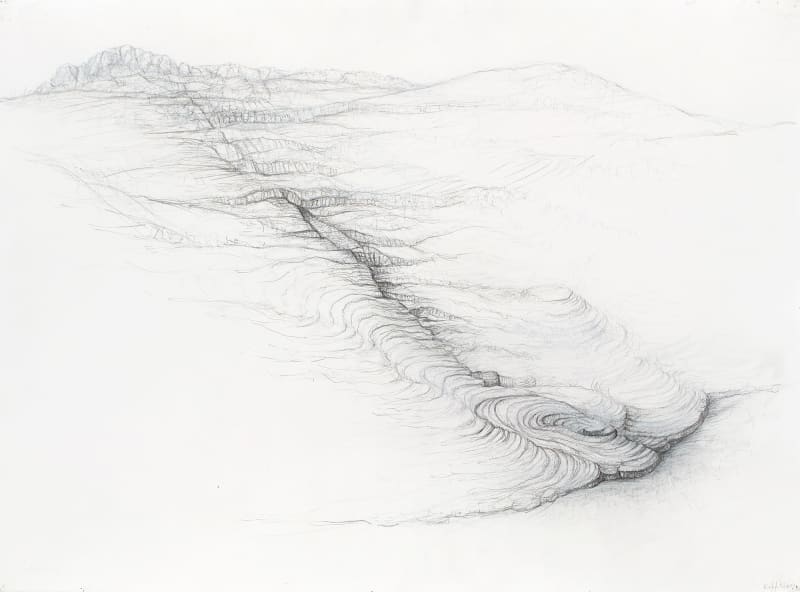Born in Jerusalem, 1931
Lives and works in Paris, France
Raffi Kaiser has been drawing nature from memory for the last four decades. Nature he has wandered through himself. When he finds himself in the vastness of the Israeli deserts on his journeys, climbing the monumental mountain ranges of China or looking into the abyss of a crater in Japan, he too feels like a tiny part of nature and asks himself: “Qu’est-ce que l‘être humain par rapport à l’univers ?” (What is man when compared to the universe?) In this short sentence he expresses his reverence for nature – and not without pointing out how small humans are.
The silent emptiness of the vast, intensively experienced natural spaces has left a mark on him: he unceasingly draws monochrome primal landscapes characterized by a sense of desertion. In doing so, he relies entirely on his hand, guided through the drawing process by his sense of composition and his memories. This automatic, intuitive process gives rise to landscape structures with a vague spatiality that eschew descriptive elements such as the sun, shadows, clouds. The laws of time and space are suspended in Kaiser’s world of landscapes, and they are also entirely devoid of human presence.
Insight may lie in self-denial, a typically Japanese characteristic: In the case of Kaiser’s works, eschewing certain elements makes it possible to exclusively capture the inner structure of natural impressions. Kaiser’s drawings thus give rise to a type of atmosphere that is new in the Western history of landscape painting, namely one infused by reduction and emptiness. Thus, silence and emptiness, elementary characteristics of traditional East Asian ink painting, have also become essential components of Kaiser’s remembered landscapes. They lend his works a sublime, enigmatic character and enable us to “fill” his drawings in our mind as we look at them.
The “blank spaces” in the landscapes, which we are often unable to find rational explanations for as we contemplate them (are they fog, bodies of water or clouds?) are also traces of his own speechless wonder in face of the incredible scenes of nature he has witnessed. Yet religious feelings are alien to the artist, he does not understand nature as God’s creation, but simply as a self-contained secret.
When Kaiser picks up ink and quill, he thus wants to transcend the mere outward experiences of the landscapes he has witnessed. He wants to trace the universal unity of nature as he has himself experienced it in the process of drawing and get a little closer to its innermost interrelationships. Drawing nature, be it large landscape spaces or individual, singled out moments, is an inner necessity for Raffi Kaiser. The fact that he essentially also sees this practice as a means of meditation, enabling him to tread questioning philosophical paths without words, positions the Western artist’s way of thinking close to that of the Far East and Japanese art.
Pauline Drichel
